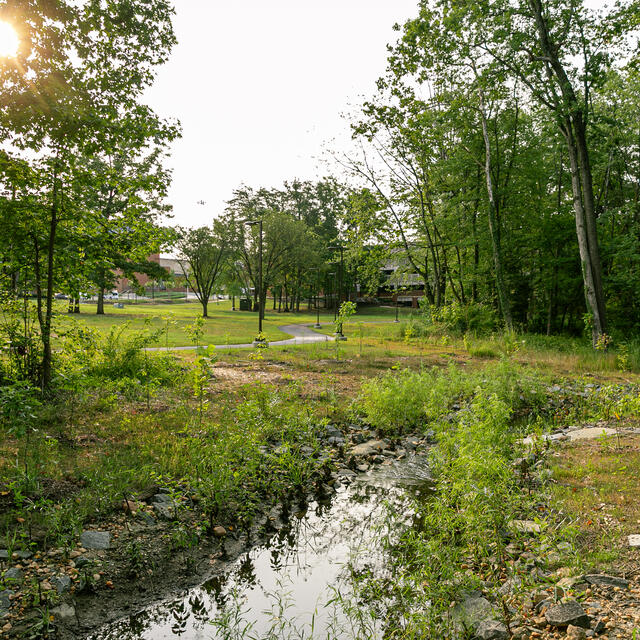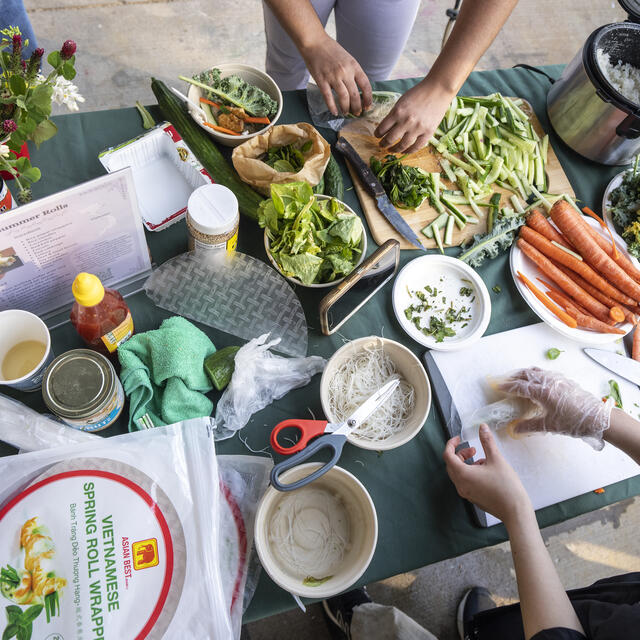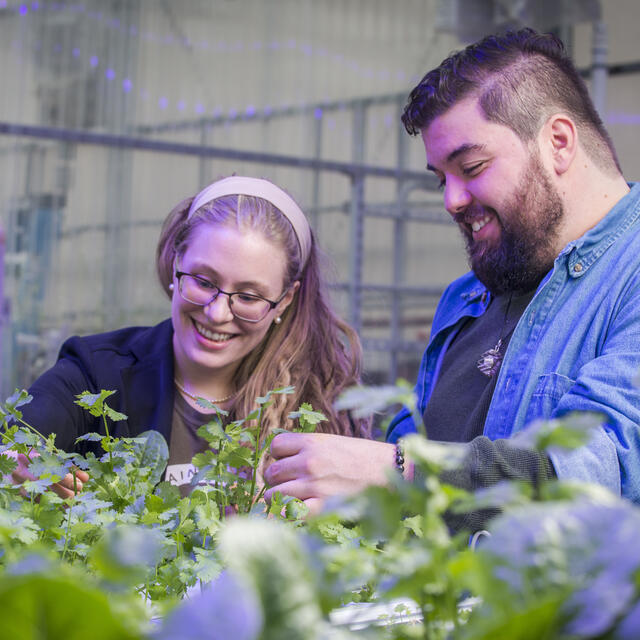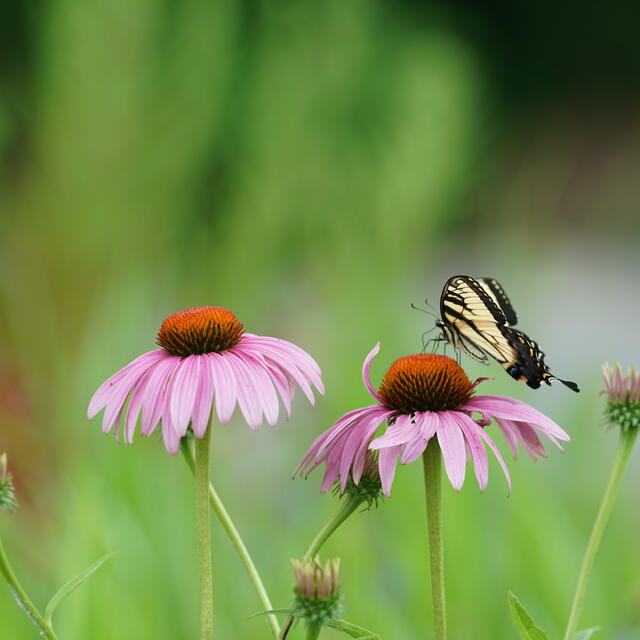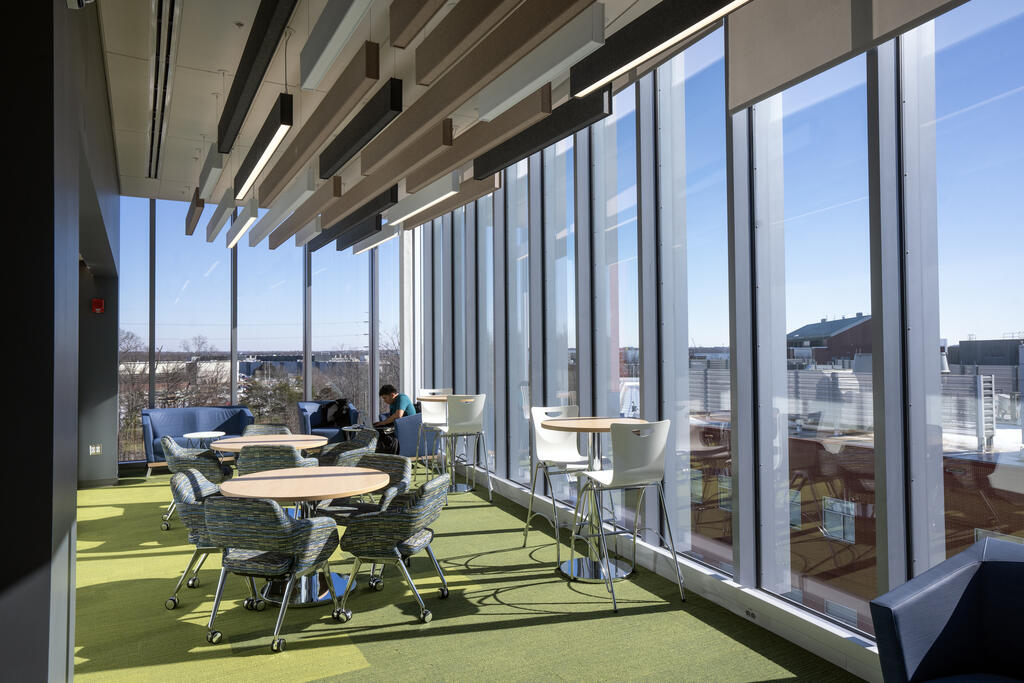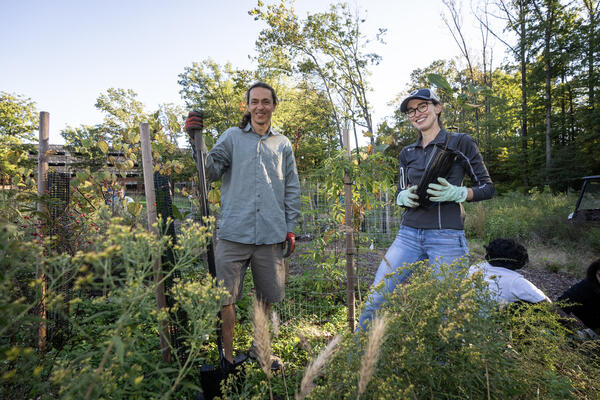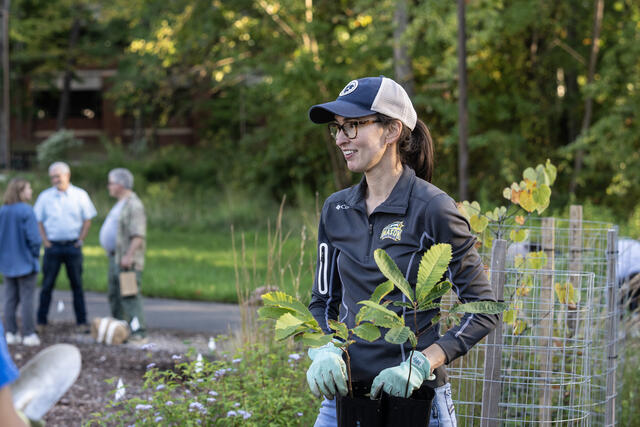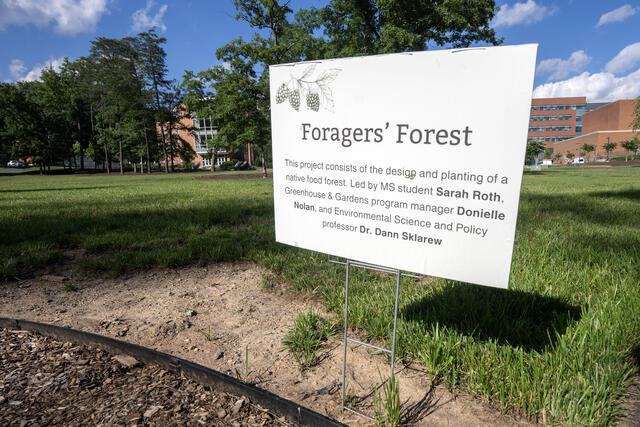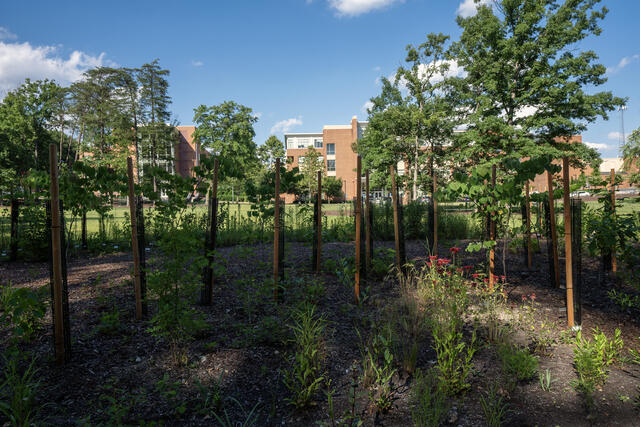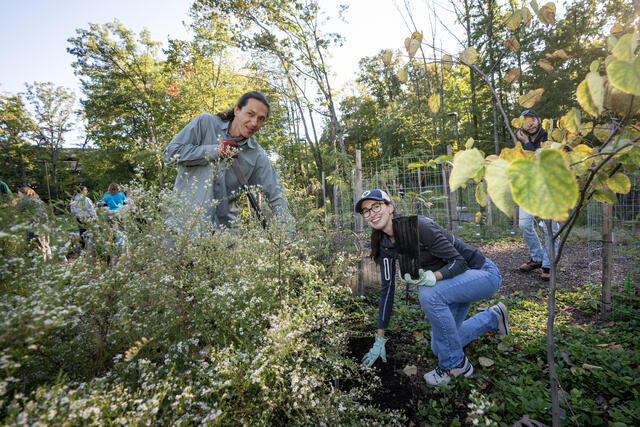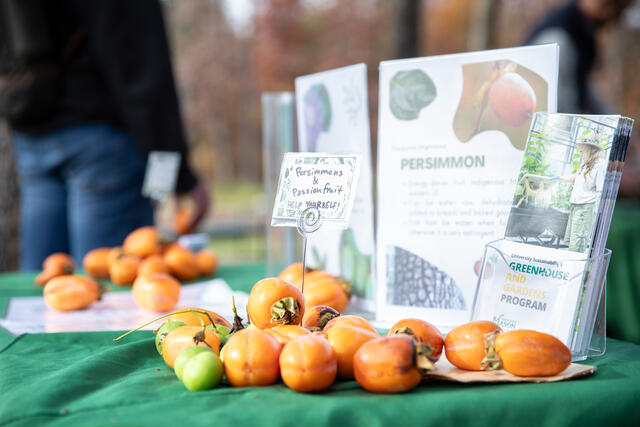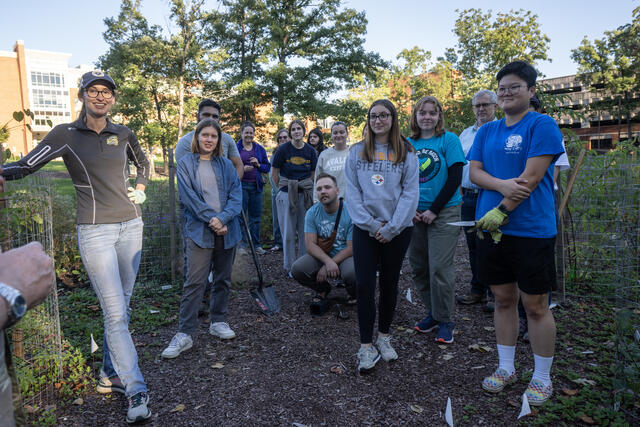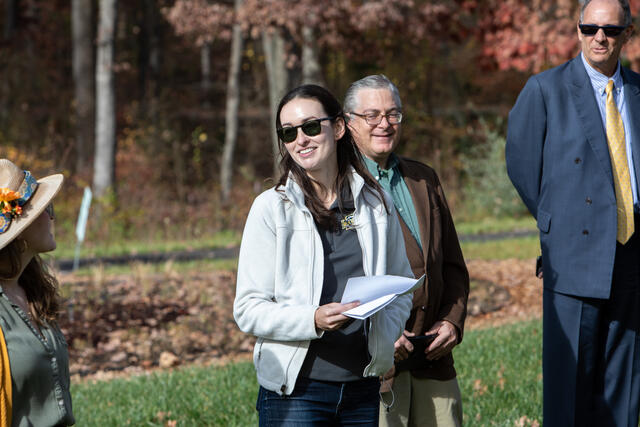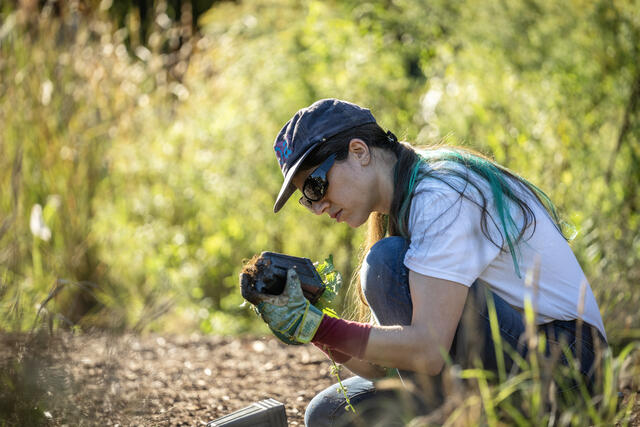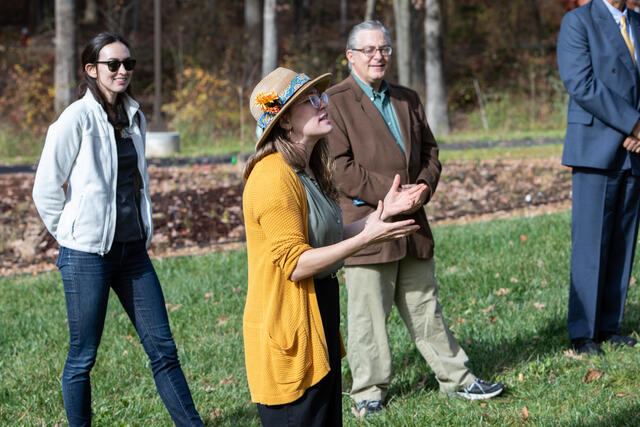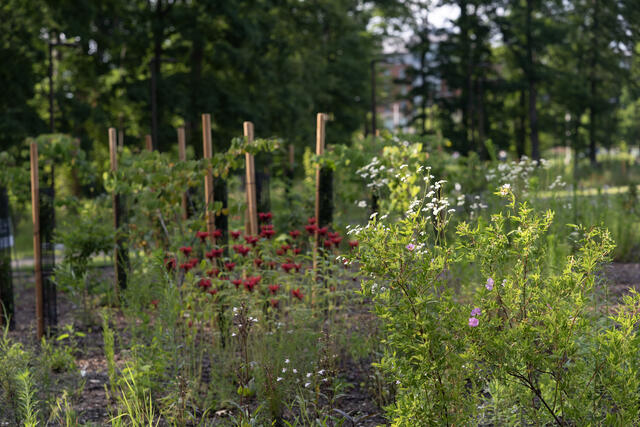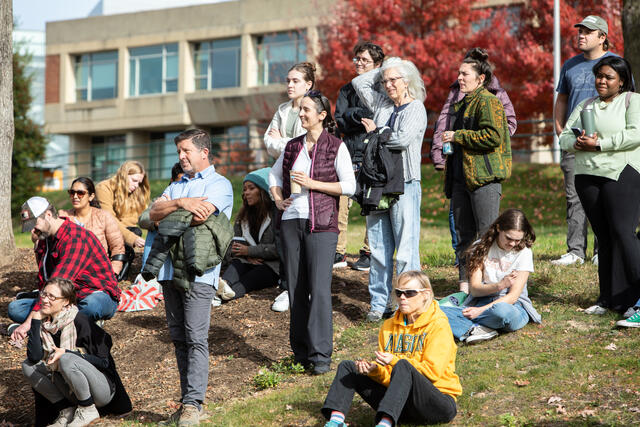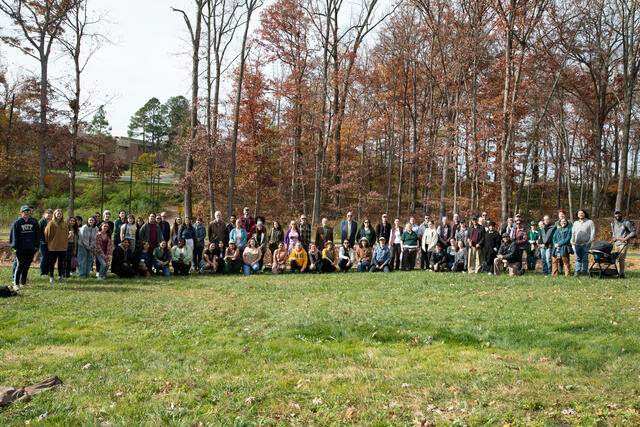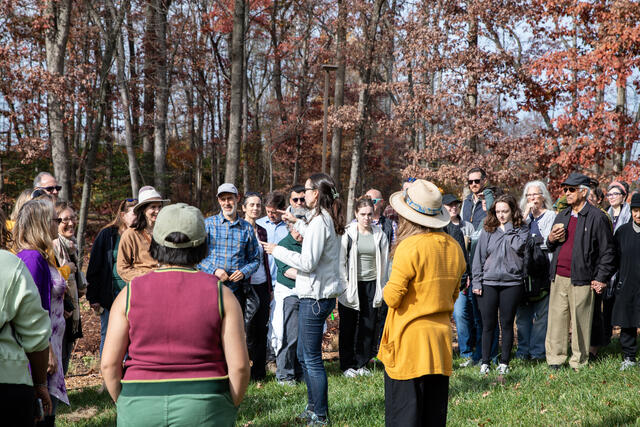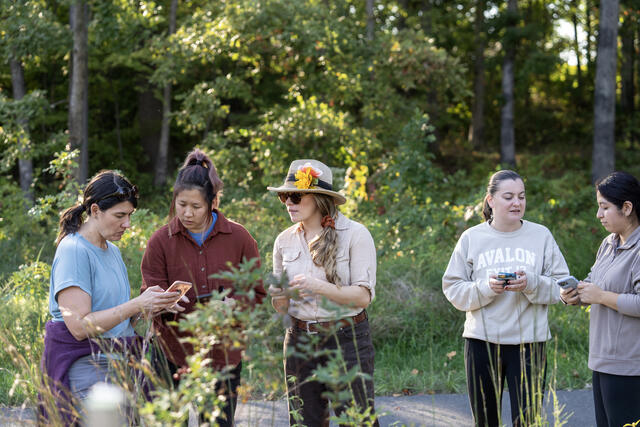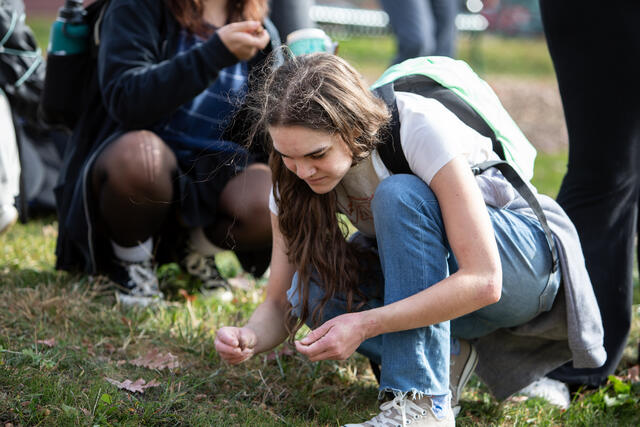Foragers' Forest
Admission CTAs
Visit us on the Fairfax campus
- Foragers' Forest
Located in two groves near the stream between Aquia Creek Lane and Patriot’s Circle on Mason’s Fairfax Campus. The groves are shown as “X” on the map.
- Campus map
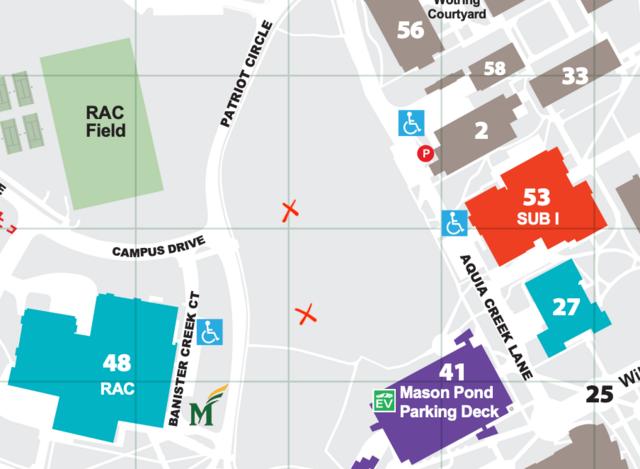
Foragers' Forest facts
57
Different species of plants
1,900+
Perennial native plants, including walnuts, persimmons, blueberries, and hazelnuts.
5,300
Square feet of planting area
Forager’s Forest Honored for Excellence in Sustainable Landscape Design
George Mason's Forager's Forest received honorable mention for "excellence in alternative landscapes/landscape conversions" at the 2025 Best Urban BMP in the Bay Awards. This award recognizes innovative projects geared towards protecting the Chesapeake Bay watershed.
Connecting the local area one CHEW at a time
The Foragers’ Forest provides access to free native foods and safe foraging opportunities. It serves as a nexus for sustainability goals related to climate, hunger alleviation, ecological rehabilitation, and wildlife (CHEW).
The two Foragers’ Forest groves include clusters of closely planted native trees and shrubs, an approach adapted from the Miyawaki method and used in several local ecological restoration projects. These “woody” clusters are surrounded by native meadow plants that provide diverse habitat for wildlife. Whether exploring from the trails or observing from nearby benches, the Foragers’ Forest invites visitors to enjoy the rich flora and fauna that call this space home.
Our partners include George Mason University’s College of Science, the Institute for a Sustainable Earth, Mason Sustainability, and Mason Facilities. A special thank you to the project’s funders and supporters at Amazon Web Services, ISE, Mason Facilities, and The American Chestnut Foundation.
